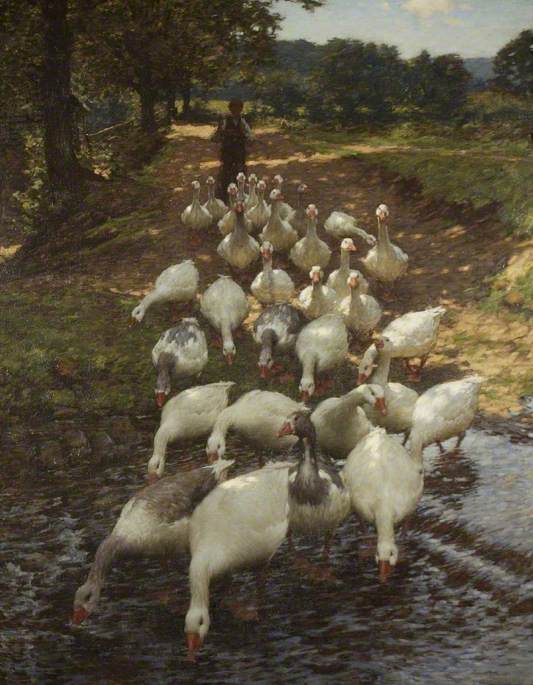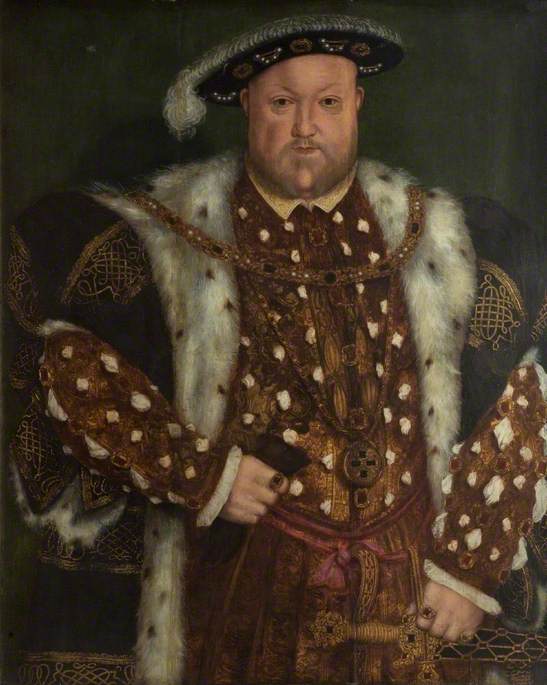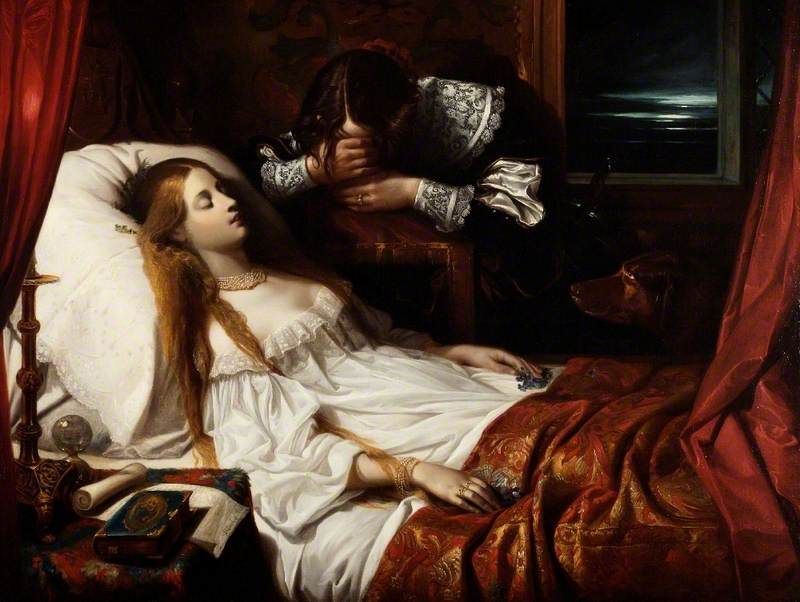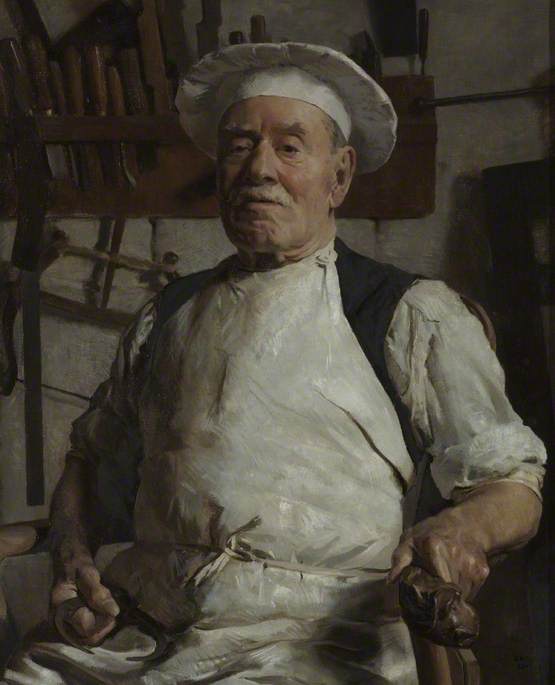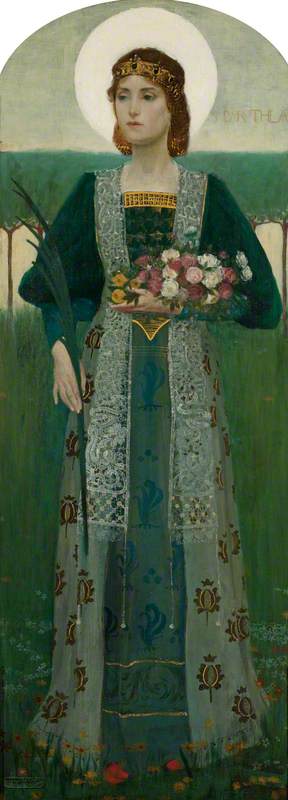A few months ago, I asked our staff and volunteers to choose their top ten works from the Gallery's collection. For most of us, the selection wasn't just about the paintings that we personally love the most (although of course, that did come into it), but also the works that our visitors most enjoy.
While we're closed, I hope this selection is a reminder of what we're all missing.
Katharine Wall, Collections Manager, Victoria Art Gallery
-
The Watersplash
The Watersplash 1900This painting effortlessly transports us to a place of sunny, rural tranquillity It is hard to believe what a radical painting it was in its time. Victorian taste dictated that paintings should have a lustrously smooth finish. La Thangue, however, has created a thickly textured surface, focusing on movement and light rather than detail.
Influenced by the Impressionists, La Thangue learnt to paint in the open air when studying in France. Returning to Britain, he tried to convert the Royal Academy to the new style. When this failed, he became a founding member of a rival body, the New English Art Club, advocating painting everyday subjects as spontaneously and naturally as possible, emphasising light and weather conditions.
Henry Herbert La Thangue (1859–1929)
Oil on canvas
H 116.8 x W 94 cm
Victoria Art Gallery
-
Henry VIII
Henry VIII (1491–1547)Henry looks every inch the iconic Tudor king. Physically imposing and richly dressed, with fur and jewels meticulously painted with tiny brushstrokes. This is a copy of a work painted by Hans Holbein for Henry's private apartments in Whitehall Palace.
Several copied were commissioned by the court, as diplomatic gifts or rewards for Henry's favourites. Over the centuries these have in turn been copied, making this a very well-known image.
Recently the age of the panel that this is painted on was investigated, with dendrochronological analysis, showing that it was painted around 1550. This makes it one of the oldest works in our collection.
Hans Holbein the younger (c.1497–1543) (after)
Oil on board
H 90.5 x W 73 cm
Victoria Art Gallery
-
Anna Bilinska (1857–1893)
Anna Bilinska (1857–1893) 1884This enigmatic portrait of a dignified woman in mourning is one of our best loved works, despite its sombre appearance. The sitter is Polish artist Anna Bilinska, whose father had recently died.
Emmeline Deane met Bilinska in Paris at the celebrated Academie Julian, one of the few art schools accepting female students. Bilinska both taught and studied there, but hoped to open an art school in Poland. Tragically, she died of a heart condition, aged only 36.
Emmeline Deane was from a wealthy family. Although she pursued art seriously this was only on an amateur basis. Despite this, the portrait of Bilinska was shown at the Royal Academy in 1887, where its intensity caused such a stir that it featured in a cartoon in Punch magazine.
Emmeline Deane (1858–1944)
Oil on canvas
H 128 x W 90.7 cm
Victoria Art Gallery
-
The Adoration of the Magi
The Adoration of the MagiThis, the oldest painting in the Gallery’s collection, is immediately recognisable as a religious work. It tells the story of the pilgrimage of the Magi, the three wise men, who travelled from the east to pay homage to the newborn Christ child in the stable at Bethlehem, offering gold, incense and perfumed ointment.
When this was painted, very few people were literate. Paintings were thus an important tool for communicating the stories and message of the Bible visually. Mary and Jesus are therefore in the centre, the most important figures, with their divine natures clearly shown by the gold lines surrounding their heads. The Magi appear twice, in the centre and as tiny figures top right.
Hugo van der Goes (c.1440–1482) (circle of)
Oil on board
H 43.3 x W 72.3 cm
Victoria Art Gallery
-
Thomas Rumbold (1736–1791), and Son
Thomas Rumbold (1736–1791), and SonGainsborough moved to Bath in 1759. He rented a grand house, close to the Pump Room in the expectation that wealthy spa visitors would flock to his studio to sit for a portrait. Lively and sociable, Gainsborough would have enjoyed meeting many of the people who wanted to be painted. However he often found the business of portrait painting tedious, especially producing flattering portraits of unattractive sitters.
Thomas Rumbold was a prosperous businessman, involved in the East India Company. Although painted in the studio father and son are shown strolling through a woodland landscape. The portrait celebrates their harmonious relationship and Rumbold's pride in his son. It has generously been lent by a member of the Rumbold family.
Thomas Gainsborough (1727–1788)
Oil on canvas
H 234 x W 153 cm
Victoria Art Gallery
-
The Foreign Bloke
The Foreign Bloke c.1933The enigmatic nature of this tiny painting has made it one of our most popular works. Its subject is a mystery and matter for debate. Who is ‘the foreign bloke’? Is he the subject of the conversation, or is he one of the men in the picture? A possible clue could be a shop sign seen through the window, with words appearing to have a distinctly Italian character on it.
Whistler is perhaps best known for the murals he painted in the Tate Gallery’s restaurant, completed when he was only 22. Tragically, he was killed while serving with the British army during World War II.
Rex Whistler (1905–1944)
Oil on board
H 35.7 x W 24.7 cm
Victoria Art Gallery
-
The Bride of Death
The Bride of Death 1839The Bride of Death, dramatically lit and beautifully evocative, has long been one of Thomas Jones Barker’s most popular pictures. It tells the tragic, romantic story of a virtuous and beautiful woman who dies on the eve of her wedding.
The artist has included numerous visual clues to help tell the story; the dog symbolises fidelity, the bride’s pearls symbolise purity and the hourglass the brevity of life. With its emotionally charged telling of a sad story, this painting is a wonderful example of Victorian narrative painting at its over the top, heart wrenching best.
Thomas Jones Barker (1815–1882)
Oil on canvas
H 124.5 x W 167.1 cm
Victoria Art Gallery
-
The Truant in Hiding
The Truant in Hiding 1870Like most of Horsley’s paintings, this one tells a story and has been set in the 17th century. The boy has run away from his lessons and now hides behind the maid as his angry tutor searches for him in the garden. The maid’s conspiratorial sideways glance shows that she sympathises with the boy and will not give his whereabouts away.
The narrative element of the painting is typical of 19th century art created to hang in a domestic setting. Rather than simply showing an attractive view, the work is designed to make the viewer empathise with the characters, imagine what has just happened and speculate as to how the story ends.
John Callcott Horsley (1817–1903)
Oil on canvas
H 74.3 x W 71.7 cm
Victoria Art Gallery
-
Charles Baker (1841–1932), the Chairmaker, Bath
Charles Baker (1841–1932), the Chairmaker, Bath 1930Traditionally, portraits are designed to show the status of sitters. They depict wealthy and important people, dressed in their most stylish and expensive clothes. This portrait is very different. The tools hanging on the wall don’t just add interest to the background. They also tell us that the sitter is a carpenter. His crumpled apron and slightly irritated expression make it seem as if he has been interrupted while working and forced, reluctantly, to sit for a portrait.
Charles Baker is shown aged almost ninety. This was painted to mark his retirement from a career lasting over seven decades. He was an expert chairmaker, specialising in perfectly made reproductions of antique Chippendale chairs.
Frederick George Swaish (1879–1931)
Oil on canvas
H 74 x W 61.5 cm
Victoria Art Gallery
-
Saint Dorothea
Saint Dorothea 1895George Frampton was a leading figure in the Arts and Crafts movement and is probably best known for his statue of Peter Pan in Kensington Gardens. This painting is a panel from a piece of furniture, a beautiful painted screen which is one of his most significant earlier works. Saint Dorothea, was a 4th century martyr and patron saint of florists. She is shown with her martyr’s palm, the full moon behind her creating a halo.
The Saint’s beautiful dress is reminiscent of the 19th century ‘artistic dress’ movement, which promoted flowing robes based on medieval designs. Beautiful materials and simplicity of design were promoted as an alternative to restrictive Victorian fashions.
George James Frampton (1860–1928)
Oil on panel
H 96.3 x W 35.5 cm
Victoria Art Gallery
-
Posh Art
Although an early work, Posh Art typifies Perry’s idiosyncratic approach to pottery. Not just a pot, it is a fully formed work of art with something to say. Unlike most ceramics, Grayson Perry’s Posh Art is about something; it addresses taste, wealth and social class, the themes that Perry is famous for tackling, in the unlikely but effective form of pottery. It is full of details including banknotes, Queen Elizabeth I and images of hunting and shooting – motifs rooted in ceramics history, inspired by folk pottery. ‘Posh Art’ plays on social class; the upper classes and royalty, mingling with the vernacular working class word for making money (earn). The vessel itself, a classical urn, is a pun on the word 'earn.'
Posh Art 1992 Grayson Perry (b.1960)
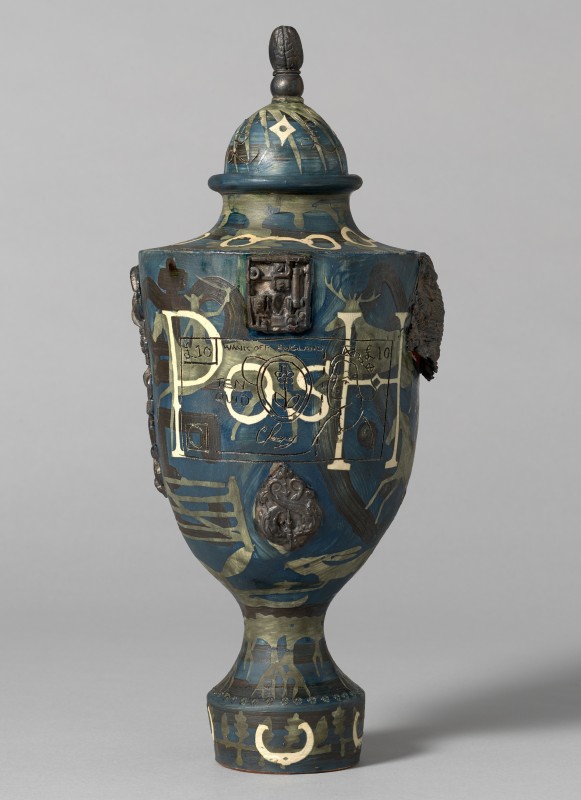 © Grayson Perry. Image credit: Victoria Art Gallery
© Grayson Perry. Image credit: Victoria Art Gallery
Explore artists in this Curation
-
 Thomas Gainsborough (1727–1788)
Thomas Gainsborough (1727–1788) -
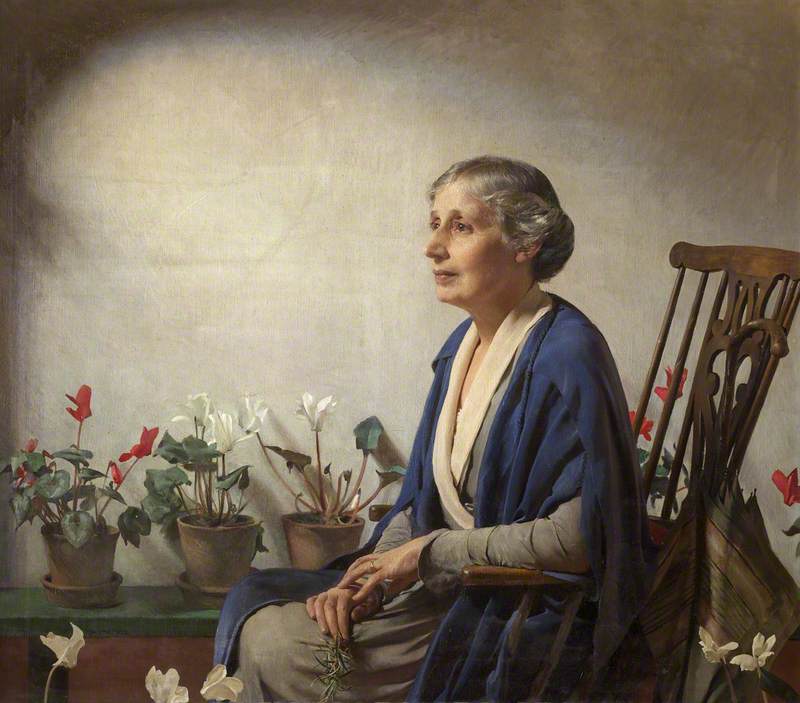 Frederick George Swaish (1879–1931)
Frederick George Swaish (1879–1931) -
 Thomas Jones Barker (1815–1882)
Thomas Jones Barker (1815–1882) -
 Emmeline Deane (1858–1944)
Emmeline Deane (1858–1944) -
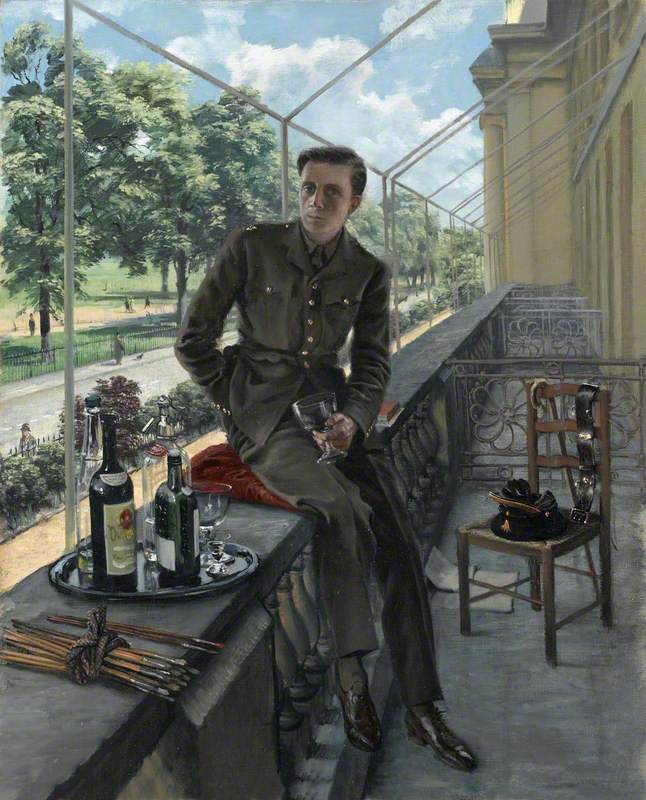 Rex Whistler (1905–1944)
Rex Whistler (1905–1944) -
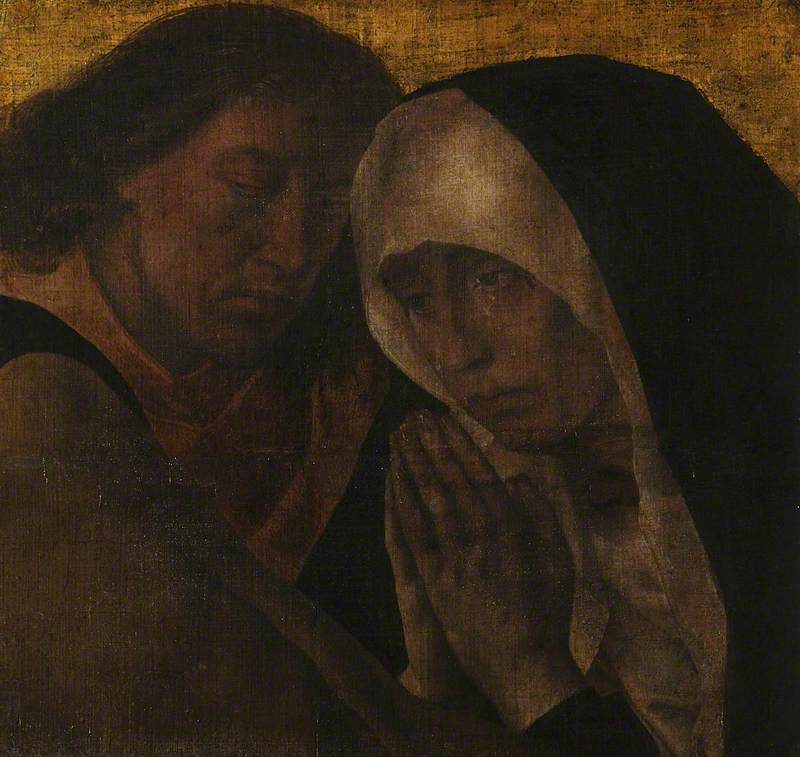 Hugo van der Goes (c.1440–1482)
Hugo van der Goes (c.1440–1482) -
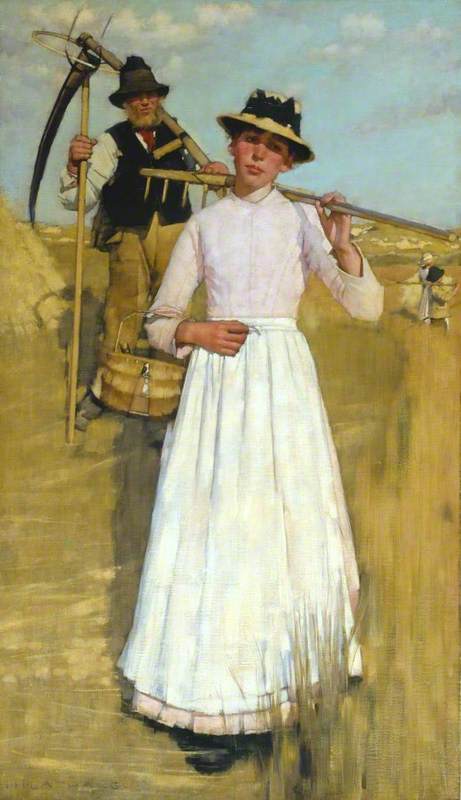 Henry Herbert La Thangue (1859–1929)
Henry Herbert La Thangue (1859–1929) -
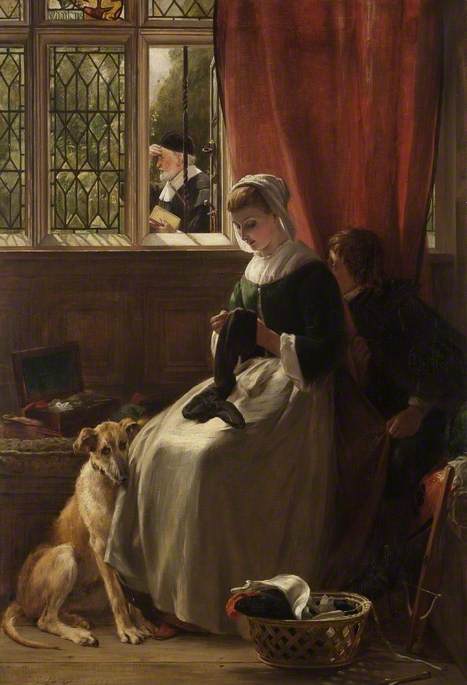 John Callcott Horsley (1817–1903)
John Callcott Horsley (1817–1903) -
 Hans Holbein the younger (c.1497–1543)
Hans Holbein the younger (c.1497–1543) -
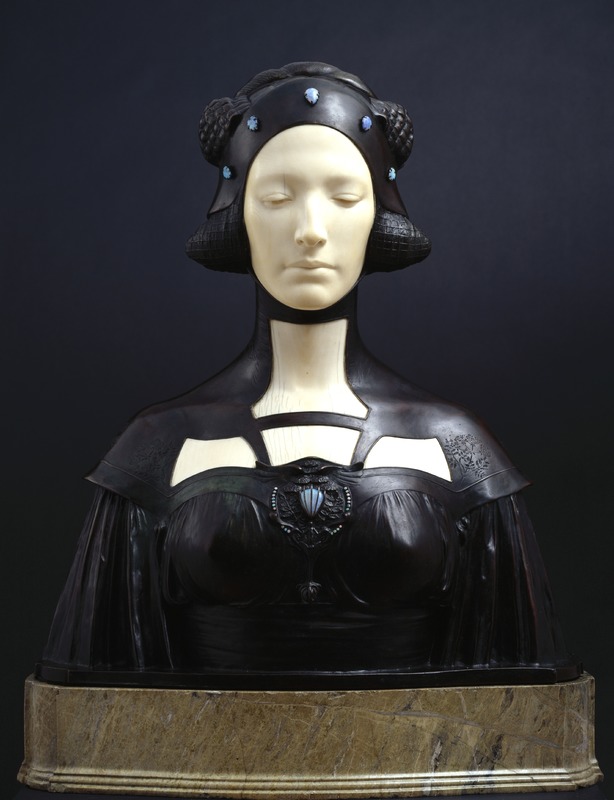 George James Frampton (1860–1928)
George James Frampton (1860–1928)
